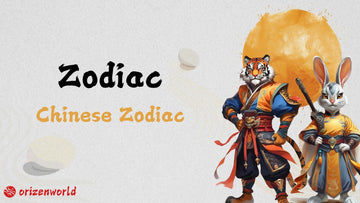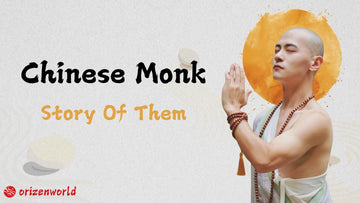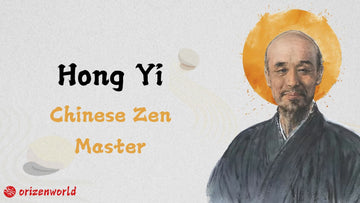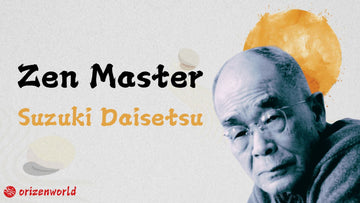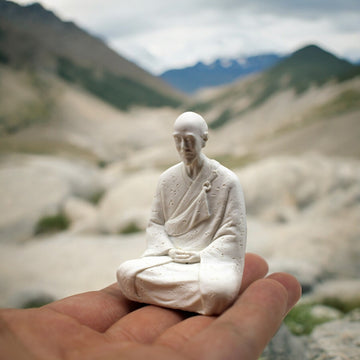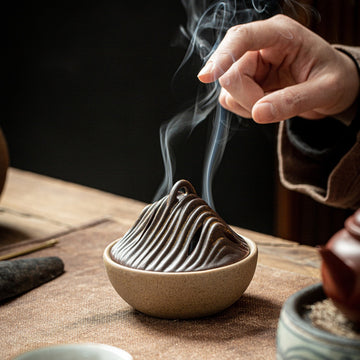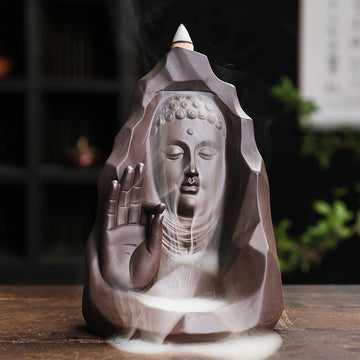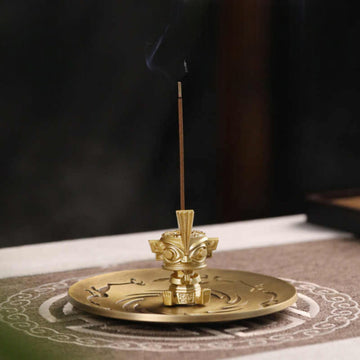It’s often said that every Chinese person knows kung fu, and similarly, it seems like every Chinese individual has a representative animal—this is the Chinese zodiac. If you have Chinese friends or live in China, people will often ask your zodiac sign, share your zodiac traits, and even your Feng Shui fortune. Some enthusiasts even get tattoos of their zodiac animals! Interestingly, the Chinese take their zodiacs seriously, sometimes considering compatibility between zodiac signs before marriage to ensure harmony.
But where does the Chinese zodiac originate, and what’s the story behind it? In this article, we’ll explore the fascinating history, meanings, and cultural significance of this ancient tradition. Let’s uncover the mystery together!
Before diving into the details, let’s first understand what the Chinese zodiac is. The Chinese zodiac is an ancient system comprising 12 animals, each representing a year in a 12-year cycle.

These animals—Rat, Ox, Tiger, Rabbit, Dragon, Snake, Horse, Goat, Monkey, Rooster, Dog, and Pig—come from daily life, except for the Dragon, a mythical creature revered in Chinese culture.
Each zodiac animal corresponds to a specific year and is deeply connected to Feng Shui and personal fortune. People born in a particular zodiac year are believed to inherit the traits of that animal, which can influence their personality, compatibility, and life path. For example, the Dragon symbolizes strength and ambition, while the Rabbit represents kindness and elegance.
The Chinese zodiac also plays a key role in Feng Shui, shaping how people approach luck, relationships, and even career decisions. It’s common for Chinese people to consider zodiac compatibility when forming relationships or making significant life choices. By understanding the Chinese zodiac, you unlock insights into a fascinating cultural tradition that intertwines personality, destiny, and harmony with the natural world.
The origins of the Chinese zodiac are deeply rooted in ancient Chinese culture, with multiple theories explaining its development. Some believe it originated from totem worship in ancient tribes, where the animals symbolized revered traits. Others attribute it to the integration of astronomy and calendrical systems, where the 12 animals correspond to specific times and seasons. Folklore also plays a role, with popular stories like the Great Race and animals repaying kindness explaining the zodiac's composition and order. These narratives reflect the cultural richness embedded within the zodiac.
Among historical evidence, Qin-era bamboo slips discovered in Hubei and Gansu confirm that a relatively complete zodiac system existed as early as the pre-Qin period. These records provide a glimpse into the early use and significance of the zodiac, indicating its influence on various aspects of daily life.
The legend of the Jade Emperor and the Great Race remains a beloved story. According to this myth, the Jade Emperor invited animals to a race, determining their order based on their arrival. The clever Rat claimed first place by outsmarting the Ox, setting the sequence of the 12 animals.
Beyond mythology, the zodiac was historically used in timekeeping and astrology. The animals were linked to the 12 Earthly Branches, helping people interpret time, seasons, and cosmic patterns, shaping the rhythm of traditional Chinese life.
Everyone has their unique personality, and so do Chinese zodiac animals. Many believe their zodiac sign influences their character traits. Each of the 12 zodiac animals carries distinct meanings and personalities, shaping how people view themselves and interact with others. In this section, we’ll explore the significance and characteristics of each Chinese zodiac animal, helping you better understand your sign and its unique features. Discover what your zodiac animal says about you!
| Zodiac Animal | Character Traits | Cultural Significance |
|---|---|---|
| Rat (鼠) | Intelligent, adaptable, resourceful | Symbolizes wealth and cleverness; admired for its ability to survive and thrive in diverse conditions. |
| Ox (牛) | Diligent, reliable, enduring | Represents hard work, prosperity, and strength; associated with harvest, happiness, and good fortune. |
| Tiger (虎) | Brave, powerful, authoritative | Embodies courage and justice; often used to signify strength, power, and protection. |
| Rabbit (兔) | Gentle, cautious, thoughtful | Symbolizes harmony and family; admired for its elegance and sensitivity to others. |
| Dragon (龙) | Powerful, mysterious, auspicious | Represents imperial authority, luck, and success; a revered mythical creature in Chinese culture. |
| Snake (蛇) | Insightful, mysterious, strategic | Signifies wisdom and mystique; both feared and respected for its unique appearance and behavior. |
| Horse (马) | Energetic, free-spirited, strong | Symbolizes freedom and vitality; admired for its strength, speed, and adventurous spirit. |
| Goat (羊) | Gentle, kind, peaceful | Represents harmony, kindness, and comfort; a symbol of warmth and friendliness. |
| Monkey (猴) | Smart, agile, playful | Reflects intelligence and adaptability; symbolizes quick thinking and problem-solving abilities. |
| Rooster (鸡) | Hardworking, disciplined, alert | Associated with diligence and persistence; admired for its vigilance and determination. |
| Dog (狗) | Loyal, honest, friendly | Embodies loyalty and protection; a beloved symbol of companionship and trust. |
| Pig (猪) | Kind, modest, prosperous | Represents abundance and peace; symbolizes quiet diligence and gentle wealth. |
The Chinese zodiac is deeply ingrained in Chinese society, influencing various aspects of daily life and culture. One of its most common applications is in marking years. Each zodiac animal represents a year, such as 2022 being the Year of the Tiger and 2023 the Year of the Rabbit. This cycle determines an individual’s Ben Ming Nian (zodiac year), during which people often perform rituals to seek blessings and ward off bad luck.
In divination and Feng Shui, the zodiac is closely linked with Yin-Yang and the five elements. It is used to analyze personality traits, predict fortunes, and assess favorable environments and opportunities. Feng Shui also incorporates zodiac animals to determine auspicious directions for homes or businesses, aligning them with one’s sign for good fortune.
The zodiac serves as a cultural symbol, featured in art, literature, films, and folk tales. It appears in paintings, sculptures, ceramics, and even modern media like games and animations, preserving its relevance across generations. In commerce, zodiac-themed products are widely popular, especially during Lunar New Year. Handicrafts, toys, jewelry, and decorations featuring zodiac animals are sought after for their cultural and festive appeal.

"Jackie Chan Adventures" is an animated series centered around the 12 Chinese zodiac talismans, blending martial arts, humor, and magical adventures in an action-packed storyline.
Zodiac animals also inspire fashion and collectibles. During festivals, people wear clothing featuring zodiac motifs to celebrate tradition, while others collect zodiac-themed stamps, coins, or commemorative items as symbols of cultural pride. This widespread usage reflects the zodiac’s enduring significance.
The Chinese zodiac plays a crucial role in Feng Shui practices, intertwining with elements like the Heavenly Stems and Earthly Branches, the Eight Trigrams (Ba Gua), and the five elements. Each zodiac sign corresponds to a specific direction and element, which can influence the flow of energy (Qi) within a living space. Combining zodiac traits with Feng Shui principles provides a personalized approach to achieving harmony and balance.

Enhancing luck and prosperity through your zodiac sign requires understanding basic Feng Shui concepts, such as directions and the five elements. By identifying the zodiac-related direction in your home, you can determine your life palace (Ming Gong) and adjust your surroundings to attract positive energy. For instance, proper placement of objects and decor in these areas can amplify wealth, health, and happiness.
In a typical household, each family member has two key Feng Shui positions: the zodiac direction (Ming Gong) and their Ba Gua palace. For example, if a father is born in the Year of the Rat, his zodiac position is the north, while his Ba Gua position is the northwest (Qian). Feng Shui adjustments consider both areas to enhance overall energy and fortune.
When consulting Feng Shui, practitioners carefully examine these two positions for each family member. Proper alignment and activation of these spaces ensure harmony and prosperity, while neglect can lead to disruptions in luck and health. Balancing the zodiac and Ba Gua elements creates a prosperous environment for the household.
To verify your Chinese zodiac animal, it’s essential to understand the unique structure of the Chinese lunar calendar. Unlike the Western Gregorian calendar, which follows fixed dates, the Chinese zodiac is based on the lunar cycle, which includes the 24 solar terms. These terms mark the change of seasons, and your zodiac animal is determined by the year in which you are born, but more specifically by the date of the Chinese New Year or the solar term of Li Chun (the beginning of spring).
The Chinese zodiac operates on a 12-year cycle, where each year corresponds to an animal. However, determining your animal is not as simple as checking your birth year. Instead, it’s crucial to understand that the zodiac year doesn’t necessarily begin on January 1st or the first day of the lunar new year. For example, in 2025, the Li Chun falls on February 3rd, marking the start of the Year of the Snake. Babies born after this date would belong to the Snake sign, while those born before it would still fall under the Year of the Dragon.
The significance of identifying your correct zodiac animal is not just a matter of curiosity but can influence your life choices. In Chinese culture, your zodiac is believed to affect your personality, compatibility, and even your fortune. For instance, if your zodiac is incorrectly identified, you may find yourself out of sync with the energies of the year. This can lead to misunderstandings, such as believing you are in conflict with the stars or that you’re experiencing a "bad year" when the issue lies in incorrect information.

Inaccurate knowledge about your Chinese zodiac can even lead to an identity crisis. A famous example is actor Nicolas Cage, who once believed he was born under the Dragon sign, only to later find out that, according to the lunar calendar, he was actually born in the Year of the Rabbit. He had even tattooed a dragon on his body, believing it reflected his true zodiac animal.
Thus, correctly identifying your Chinese zodiac is essential for aligning with the cultural and spiritual aspects that are deeply ingrained in Chinese traditions. To avoid confusion or personal misalignment, double-check the exact date of Li Chun in the year of your birth, and confirm your animal sign.
The Three Harmony and Six Harmony Theory (三合六合) is an essential concept in Chinese traditional culture, describing the harmonious and complementary relationships between the 12 Chinese zodiac signs. This theory helps guide people in their interactions and life choices, suggesting that certain zodiac combinations can bring good fortune, support, and success.
Three Harmony (三合) refers to the harmonious relationship formed by three zodiac signs. These signs come together to create a powerful and positive force. Each zodiac sign has a corresponding three-sign combination that is believed to bring about success and prosperity. The combinations are:
Shen-Zi-Chen (Monkey, Rat, Dragon)
Si-You-Chou (Snake, Rooster, Ox)
Yin-Wu-Xu (Tiger, Horse, Dog)
Hai-Mao-Wei (Pig, Rabbit, Sheep)
These trio combinations are considered beneficial in creating strong alliances, cooperation, and positive energy in various aspects of life.
Six Harmony (六合) refers to the complementary relationship between two specific zodiac signs. When these two signs come together, they support and nurture each other, fostering mutual growth and prosperity. The pairs are:
Zi-Chou (Rat and Ox)
Yin-Hai (Tiger and Pig)
Mao-Xu (Rabbit and Dog)
Chen-You (Dragon and Rooster)
Si-Shen (Snake and Monkey)
Wu-Wei (Horse and Sheep)
These pairs symbolize deep, often subtle support and harmony, and are thought to bring opportunities and favorable circumstances.
Cultural Significance
In Chinese culture, the Three Harmony and Six Harmony Theory is not just about zodiac compatibility but also represents the importance of cooperation and support in relationships. The Three Harmony emphasizes open and active cooperation, while the Six Harmony speaks to hidden, deeper connections and mutual backing.
Practical Applications
Understanding one's zodiac and its relation to the Three Harmony or Six Harmony signs can help guide personal relationships, career choices, and social interactions. For example, someone with a zodiac sign that aligns with a Three Harmony sign might find more support in social or professional settings. Similarly, Six Harmony connections could bring "noble person" luck, leading to career opportunities and personal success.
In conclusion, the Three Harmony and Six Harmony Theory is a vital aspect of Chinese culture, symbolizing harmony, support, and prosperity between the zodiac signs. It also serves as a guide for personal development and harmonious relationships in everyday life.
"Ben Ming Nian" refers to the year of the Chinese zodiac sign that aligns with your birth year, where the earthly branch of the year matches your own zodiac animal. It is a special year that is often regarded with mixed feelings in Chinese culture, as it is believed to be a time when challenges and misfortunes can arise, especially in work, relationships, and health. This concept is rooted in traditional Chinese metaphysics, where the alignment of your zodiac sign with the "Tai Sui" (the Grand Duke Jupiter) can result in increased life struggles. People entering their "Ben Ming Nian" are thought to face a period of instability and heightened risks.
Traditional Beliefs and Customs for Ben Ming Nian
In Chinese culture, numerous customs and superstitions surround the Ben Ming Nian to ward off misfortune. Common practices include wearing red items, such as red underwear, red string bracelets, or shoes, as red is believed to repel evil spirits and bring good fortune. The color red represents light, warmth, and vitality in Chinese philosophy, symbolizing protection from negativity. Many also participate in rituals to appease the Tai Sui and mitigate the perceived dangers of their zodiac year.
Other Taboos and Considerations for Ben Ming Nian
Certain activities are best avoided during the Ben Ming Nian, such as making drastic career changes, traveling to risky places, or moving homes. Career changes may bring unexpected challenges, and travel to locations with negative energy is discouraged. It’s also advised to avoid attending funerals, as they are believed to heighten negative energy. Instead, one should focus on attending celebratory events to counterbalance potential misfortune.
The Year of the Snake, 2025, promises to bring significant energy to each zodiac sign, especially with the influence of the Snake’s characteristics, such as wisdom, elegance, and caution. This year, those born under the Snake sign may experience personal growth, while others will need to balance ambition with careful planning. The Snake’s intuitive and strategic traits will guide individuals through a year of both opportunity and challenge.
For navigating the Year of the Snake, Feng Shui offers helpful tips. Focus on balance and mindfulness in all aspects of life, including your home and workspaces. Incorporate elements of fire and earth in your environment to boost energy, as these elements align with the Snake’s natural characteristics. Red and yellow hues, along with specific symbols like snakes or serpentine patterns, can bring positive vibes and foster success.
Predictions for career, relationships, and health for each zodiac sign in 2025 vary widely. For example, the Rat should focus on stability in career and avoid impulsive decisions, while the Ox may experience steady career growth despite challenges. The Tiger may face setbacks but can overcome them with caution, while the Rabbit’s financial opportunities will rise with careful partnerships. For the Snake, the year brings favorable conditions for personal achievements, but it’s important to avoid risky ventures. Each sign’s unique zodiac energy will shape the year, so it’s essential to stay grounded and wise in your choices.

